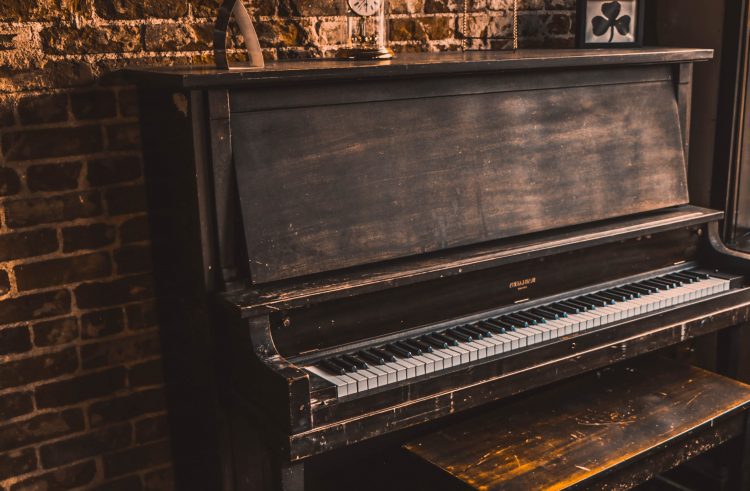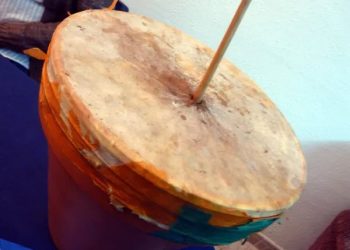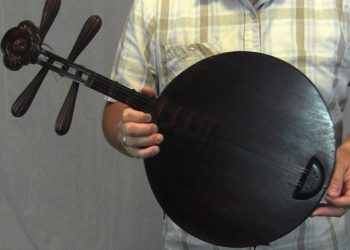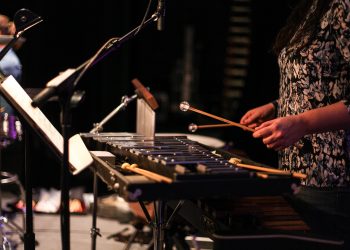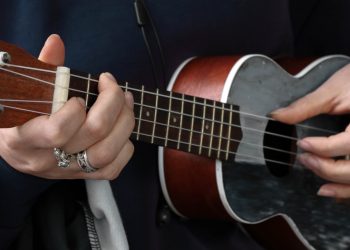Music has been a part of human culture for thousands of years, and over time, countless musical instruments have been invented to create and enhance the sounds we hear. Among these instruments, some stand out for their unique sounds and fascinating histories. In this article, we will explore the top 16 musical instruments that start with the letter P.
From classical orchestras to contemporary pop and rock bands, the instruments in this list have been played across a wide range of genres and musical styles. Some of them are ancient and have been played for centuries, while others are more modern creations. Many of them have become iconic symbols of specific cultures and regions.
The instruments in this list are not just limited to those that are commonly known, such as the piano or percussion instruments. In fact, some of the instruments on this list might surprise you with their fascinating histories and the unique sounds they produce.
Whether you are a seasoned musician or just starting to learn about the world of music, this article will provide you with a fascinating insight into the diversity of musical instruments that start with the letter P.
1. Pahu
Pahu is a traditional musical instrument of the Māori people, originating in New Zealand. It is made from a single piece of wood, often Kauri or Totara, with whalebone and sinews used to create an intricate design on top. The sound produced by the pahu can range from gentle nose flutes to deep bass tones depending on how it is played. Its purpose has evolved over time but generally reflects its importance for storytelling and unifying communities together through music.
The most common method for playing Pahu involves using two hands to strike the side of the instrument in order to produce various sounds. This technique allows players to transition between different rhythms and melodies easily when performing songs or telling stories. Additionally, some performers will also use their voices along with striking techniques – allowing them to layer multiple layers of sound onto one another at once.
Other methods include tapping the edge of the instrument with sticks or fingers as well as blowing into holes located around the edge of the body. These additional techniques are commonly used during performances that involve group participation or improvisation, creating exciting pieces that captivate audiences everywhere they go!
In short, Pahu is an incredibly versatile instrument which has been adapted over generations to become a powerful tool for expressing culture and emotion among indigenous populations worldwide.
2. Paixiao
Building upon the tradition of the Pahu, Paixiao is a Chinese instrument that has been used for centuries to create music and tell stories. This ancient wind instrument consists of two parts – a tube-like reed and an air chamber connected by thin bamboo strips. When blown into, the player’s breath passes through the reed and creates sound waves which vibrate in the air chamber. As with most traditional instruments, this one can be played solo or as part of a larger ensemble where several people play together at once.
The distinct sound produced by paixiao is often described as “whistling” due to its high pitch. Players are able to achieve different tonal qualities by varying their blowing pressure and changing the length of their notes during performance. Additionally, these instruments are also capable of producing various effects such as vibrato and tremolo depending on how they’re held and blown into.
Paixiao have become increasingly popular over time thanks to advancements in technology allowing players to amplify their sound using microphones or amplifiers if needed. Today you can find them being featured prominently within orchestras, operas and even pop concerts – showcasing just how versatile this instrument truly is!
In short, paixiao is a unique form of expression that continues to captivate listeners around the world today; from its humble beginnings in rural China centuries ago all the way up until now – its ability to evoke emotion remains unparalleled.
3. Pakhawaj
Continuing our exploration of traditional instruments, the Pakhawaj is a percussion instrument used in classical Hindustani music. This cylindrical drum is made from wood and has two heads that are struck with sticks to create sound. The player can control the pitch by adjusting the tension of each head using ropes or metal rings; this allows them to produce different tonal qualities as well as accents during performance.
The Pakhawaj has been around for centuries, however it remains an important part of modern Indian culture today – especially within popular genres such as Bollywood movies and dance performances. In addition to its unique sounds, what really sets this instrument apart is its ability to accompany vocalists or instrumentalists alike – providing both rhythm and melody depending on how it’s played.
It also has several variations including the Tabla (a smaller version) and Mridangam (a larger one). Each variation offers a slightly different set of features which allow players to experiment further with their creativity when composing pieces or performing live shows.
Overall, the versatility and adaptability of the Pakhawaj make it an indispensable component of traditional musical styles all over India – allowing musicians everywhere to express themselves freely through song!
4. Palitos
The Palitos are a traditional Indian percussion instrument that have been used for centuries. Unlike other percussion instruments, the palitos consist of two pieces of bamboo or wood held together with string in an ‘X’ shape. The player holds one end of the sticks and rubs them against each other to create a unique rhythmic sound.
The palitos can be used as both solo and accompaniment instruments – allowing musicians to easily layer different sounds over each other while playing. This makes it a great addition to any ensemble looking to add some extra texture and complexity to their music.
What’s more, there’s no need for prior knowledge or experience when it comes to learning how to play the palitos: they require minimal effort but offer huge potential rewards! All you need is some patience, practice and creativity – soon enough you’ll find yourself creating your own rhythms and beats with ease.
In short, these simple yet powerful musical tools provide immense possibilities for anyone interested in exploring new sounds and techniques within Indian music. With just a few hours dedication, you could take your compositions to whole new levels!
5. Palo De Lluvia
Building on the familiar sound of hand claps, we now move onto palo de lluvia. This percussion instrument is a staple in Indian music and has been used for centuries to create mesmerizing rhythms and beats. As its name suggests – which literally translates as “rainstick” – it produces a soothing, rain-like sound that can help set the mood in any musical arrangement.
Unlike other instruments or even hand claps, playing the palo de lluvia requires some specific techniques and practice sessions in order to get a good feel for how it works. You’ll need two stick-like objects of equal length – such as chopsticks or dowel rods – and then you want to place them into an empty tube with small holes at either end (such as bamboo). Gently rotate one of the sticks back and forth while holding down the other: this will cause tiny beads inside the tube to move around creating beautiful patterns of sound!
In addition to being incredibly versatile – since there are many variations with different types of tubes – learning how to control this unique instrument comes with several benefits. For example, because you must use both hands simultaneously, your coordination between left and right sides will improve over time. Plus, mastering the different sounds allows you to experiment freely within Indian music styles by adding complexity to simple arrangements or providing creative accompaniment during solos.
Overall, palo de lluvia offers endless possibilities for musicians looking to explore new ideas within traditional Indian music genres. Whether you’re just starting out or have experience using percussion instruments already, this fascinating instrument is sure to bring something fresh and exciting into your repertoire!
6. Palos
Building on the distinct sound of palo de lluvia, we now turn our attention to another set of percussion instruments known as palos. These are traditionally used in Cuban and Puerto Rican music and provide a great tool for creating complex rhythms and beats. Unlike other instruments such as hand claps or drums, playing palos requires particular techniques that need to be practiced before you can use them effectively.
At its core, playing palos involves striking two sticks – usually made from wood or metal – against each other while making sure they maintain contact with one another during the entire movement. This will create an interesting interplay between different tones: depending on your technique and how much pressure is applied, it’s possible to produce everything from light taps to thunderous thuds.
Also unlike some percussion instruments, there isn’t really any variation when using palos; however this doesn’t mean there aren’t still plenty of opportunities for creativity! You can experiment by adding small accents here and there throughout the rhythm to give it more texture or even break up the beat completely by introducing quick pauses in certain places. Additionally, practicing hard enough can help you master advanced techniques like flams (where both sticks make contact at once) which adds yet another layer of complexity into the mix.
Overall then, learning how to play these simple but powerful instruments opens up a whole new world of possibilities within traditional Latin American musical styles. With proper practice, you’ll soon find yourself crafting intricate patterns and beats that truly bring life to your compositions.
7. Pan Flute
From the soft clicks of palweis, we move on to a completely different type of instrument — the pan flute. This traditional Latin American wind instrument consists of several bamboo or reed tubes cut into specific lengths and arranged in ascending order from left to right. By gently blowing across the mouthpiece, players are able to produce individual notes with varying degrees of pitch depending on their breath control and pressure applied.
The sound that emanates from this simple yet elegant structure is quite remarkable; it can range from sweet and gentle tones all the way up to powerful crescendos capable of captivating any listener’s imagination. And because there is no need for accompaniment, it provides an almost meditative experience as one focuses solely on perfecting each note through trial-and-error until achieving desired results.
However, mastering the art of playing pan flutes isn’t easy – it requires a great deal of practice and patience before you can fully appreciate its beautiful melodies. But once you do get comfortable enough with controlling your breathing and manipulating notes at will, you’ll be granted access to limitless possibilities when creating music that speaks directly to your soul.
Whether used as part of larger musical arrangements or by itself as a solo performance, the pan flute has been gracing audiences around the world with its unique charm for centuries now, proving that sometimes less really is more when it comes to producing quality sounds.
8. Pandeiro
With its distinctive rhythmic patterns, the pandeiro is a staple of many Latin American and Portuguese music styles. It’s an hourglass-shaped frame drum with jingles attached to the sides that are struck using either fingers or hands depending on desired sound output. Its unique design allows for a wide range of sounds – from delicate shimmers to loud thumps – which can be manipulated by how hard it’s struck and at what angle.
The pandeiro has been around for centuries, but more recently it has seen a resurgence in popularity thanks to its prominent use in samba ensembles, bossa nova groups, and other traditional genres. Not only does it add depth and texture to any arrangement, but its versatility makes it suitable for just about any style of music as well.
Playing this instrument requires much skill and finesse; players must be able to quickly adjust their grip according to tempo changes while simultaneously controlling the volume levels coming out of each jingle. This isn’t easy — even experienced professionals have difficulty mastering the technique — yet when done right, there’s something magical about hearing the perfect balance between all components come together into one unified performance.
From skilled artists who’ve dedicated countless hours honing their craft, to those newbies just starting out on their musical journey, everyone stands to benefit from exploring what a pandeiro can offer them musically speaking. So why not give it a try? Who knows — you might find yourself captivated by its mesmerizing rhythms before you know it!
9. Pandura
Moving on from the pandera, we come to another hand drum known as the pandura. This instrument is an ancient stringed percussion used in many cultures throughout history; and it has been a staple of Middle Eastern music for centuries. The pandura consists of a circular frame with four strings that run between two pegs at either end — when plucked or strummed, these strings create beautiful resonant tones.
The pandura can be played solo or alongside other instruments, making it ideal for both accompanying traditional songs as well as providing accompaniment to dance performances. With its unique sound palette ranging from sweetly melodic passages to energetic rhythms, this instrument adds depth and complexity to any arrangement. Plus, players have plenty of options available when it comes to playing techniques – they can opt for finger-picking styles or use picks while incorporating slides and hammer-ons depending on the desired effect.
Furthermore, learning how to play the pandura takes time and dedication; newcomers should not be discouraged if progress isn’t immediate because there are plenty of resources online offering guidance about getting started. Attending workshops conducted by experienced artists provides invaluable advice which allows one to gain first-hand knowledge from professionals who’ve been in the game for years!
No matter what style musicians choose to explore with this remarkable instrument, its versatility makes it suitable for almost every genre imaginable – from classical ensembles through to pop bands, folk groups and more. So why wait? Get out there and start exploring all that the pandura has offer musically speaking – you won’t regret it!
10. Panpipe
Taking a step away from the pandura, we come to another ancient instrument: the panpipe. This wind instrument is made up of several pipes that are usually played in pairs — when blown into, they produce an enchanting soundscape which can range from delicate melodies to upbeat rhythms. It’s an incredibly versatile piece and its tones have been used for centuries in folk music around the world.
There are many different types of panpipes available on the market today — each offering their own unique sonic qualities depending on their construction materials (such as bamboo or clay). Players also have plenty of techniques at their disposal – from glissandos and rolls through to circular breathing, tremolo playing and more; all these approaches allow musicians to explore various expressions with this instrument. Additionally, there are some helpful tutorials online demonstrating how to get started with playing panpipes so beginners need not worry!
The beauty of the panpipe lies in its flexibility; it can be easily incorporated into any ensemble setting due to its soft yet powerful nature. Whether one chooses to use them as part of a classical orchestra or within a modern rock band, it adds dynamic texture and depth no matter what genre you’re exploring musically speaking. So why wait? Get out there and start discovering all that the panpipe has offer -you won’t regret it!
11. Paraguayan Harp
The Paraguayan harp is another traditional instrument with a unique sound. This stringed instrument has been used for centuries in South America and is most commonly associated with folk music from the country of its origin, Paraguay. It’s an incredibly special instrument— one that captures the joyous spirit of Latin American culture within its vibrant tones.
Unlike many instruments, the Paraguayan harp is played both horizontally and vertically on the lap of the musician. Its design consists of 34 strings attached to two wooden beams – each set producing different notes when plucked or strummed. The resulting melody has a beautiful resonance which can be adapted to suit various musical styles depending on how it’s played. Additionally, thanks to new developments in technology there are now electric versions available!
But regardless of whether you choose an acoustic or electronic model, what makes this instrument so captivating is that it transcends language barriers — anyone can enjoy its soulful sound no matter where they come from. Musicians around the world have embraced the Paraguayan harp for its versatility and expressive potential; it remains popular even today as more people discover its beauty through live performances and YouTube tutorials alike!
From intimate recitals to large-scale concerts, this dynamic piece brings something extra special to any performance setting. Whether you want to add some emotion into your playing style or explore a new genre altogether, look no further than the Paraguayan harp – it’s sure to enchant audiences everywhere!
12. Paranku
Paranku is an ancient Indian musical instrument with a unique sound. It has been used for centuries to create beautiful music and is still popular today. Paranku consists of two wooden drums joined together in the middle, covered with leather or hide on top. One side of each drum is open, while the other is partially closed off by thin strips of metal.
The player holds the instrument horizontally in front of them and strikes it with sticks that are held in either hand. The resulting sounds can range from low bass tones to high-pitched ones depending on how hard they hit the drums and where exactly they strike them. This makes paranku versatile enough to be played as both solo instruments and accompanying others in ensembles.
In terms of its physical construction, paranku stands out among traditional percussion instruments due to its size; although small, it’s surprisingly loud when played correctly. Its versatility also allows players to explore different rhythms, which can give performances an exciting dynamic energy that keeps audiences engaged throughout the entire performance.
Overall, paranku offers a rich variety of sounds and styles that make it perfect for any type of musical setting – whether one wants a gentle melody or something more upbeat and energetic!
13. Pastoral Pipes
Pastoral pipes are another fascinating traditional musical instrument. These instruments, also known as shepherd’s flutes or panpipes, have been played for centuries in many parts of the world and still remain popular today.
The pastoral pipe is a set of several small tubes made from various materials such as bamboo, wood, or clay which are joined together at one end to form an arch shape. The player holds the instrument horizontally in front of them and blows into it while covering different holes with their fingers; this produces different tones depending on where they place their fingers.
This makes pastoral pipes incredibly versatile – players can explore melodic lines that range from gentle lullabies all the way up to lively jigs, making them ideal accompaniments for any kind of performance situation. Additionally, because these instruments don’t require striking like drums do, they’re much quieter than other percussion-based instruments and therefore lend themselves more easily to softer settings without overpowering the rest of an ensemble’s sound.
Their soft timbre also allows pastoral pipes to provide a pleasant backdrop to spoken word performances and storytelling events; lending atmosphere and emotion to whatever story is being told. With its unique playing style and wide variety of sounds available, the pastoral pipe offers something special to any type of musical setting!
14. Pi Phu Thai
Pi Phu Thai is a traditional wind instrument of the Thai people that has been around for centuries. This reed flute, which can be made from bamboo or wood, produces a gentle and soothing music. It consists of two pipes connected together with both ends closed off; when air is blown through it, the sound resonates within the chambers and out into the environment. The pi phu thai is usually played solo but can also accompany other instruments in an ensemble setting.
The pi phu thai’s melodic voice creates a beautiful background to any performance – its quiet yet powerful tones create an atmosphere of tranquility that can be experienced by anyone listening. Additionally, its range allows players to explore different musical ideas such as complex rhythms and intricate melodies. This makes them an essential part of many traditional performances and ceremonies throughout Thailand.
As well as being used at important events, this particular instrument is often seen accompanying storytellers during their tales of old folklore. Its calming sounds provide the perfect accompaniment for these stories; transporting listeners back in time to mystical lands where anything is possible if you believe hard enough!
It’s clear why this ancient instrument remains so popular today – not only does it make beautiful music that evokes emotion and nostalgia, but it also adds depth and character to whatever form of performance it accompanies. Whether playing alone or as part of an ensemble, one thing is certain: pi phu thai will always have something special to offer!
15. Piano
The sound of a piano is unmistakable. Rich and full, the instrument creates an environment that can both soothe and excite the listener. As one of the most popular musical instruments in existence today, it has been used to create some of the most iconic songs in history. From Mozart’s Symphony No. 40 to Billie Eilish’s Bad Guy, its versatility knows no bounds!
Piano playing requires skill and dedication – mastering this instrument takes time and practice. Its keys range from light to heavy depending on how much pressure is applied by the player; each note must be played perfectly for the song to come together as intended. Additionally, there are various techniques such as pedaling or arpeggios which add texture to pieces of music and give them their unique sound.
For those who want more than just a beautiful melody, they need look no further than a piano accompaniment. An experienced pianist can provide chords and harmonies that flesh out any piece; these intricate layers blend together seamlessly creating an atmosphere unlike any other. Whether accompanying singers or instrumentalists, a skilled musician at the keyboard will take any performance up a level!
The piano is truly breathtaking when heard live – its majestic tones filling concert halls around the world with emotion-filled music every night. The next time you hear someone playing this incredible instrument, sit back and enjoy – because you’re about to witness something special!
16. Piccolo
The piccolo is a small, woodwind instrument with a distinct, high-pitched sound. It has been used in classical music for centuries and can be heard today throughout many different genres. Its unique timbre allows it to cut through loud ensemble pieces or stand out as the solo voice of a piece.
Playing this instrument requires skill and attention to detail – every note must be played accurately at the correct speed and dynamic level. Unlike its larger cousin, the flute, which produces sound using air that travels down long tubing; the piccolo uses shorter tubes to create notes that are higher in pitch. This means that playing rapid passages can become more difficult due to the difficulty in controlling breath flow from these smaller pipes!
The piccolo also offers great potential for creative expression – skilled players have control over vibrato, articulation, dynamics and tone colouring, allowing them to shape each phrase in their own special way. These nuances add character and emotion to any performance, creating an unforgettable musical experience when combined with other instruments or singers.
To hear what this tiny yet powerful instrument can do live is something you won’t forget soon! Whether accompanying a choir or featured as part of chamber music ensembles – the sweet tones of the piccolo will bring joy into your life no matter where you listen.
